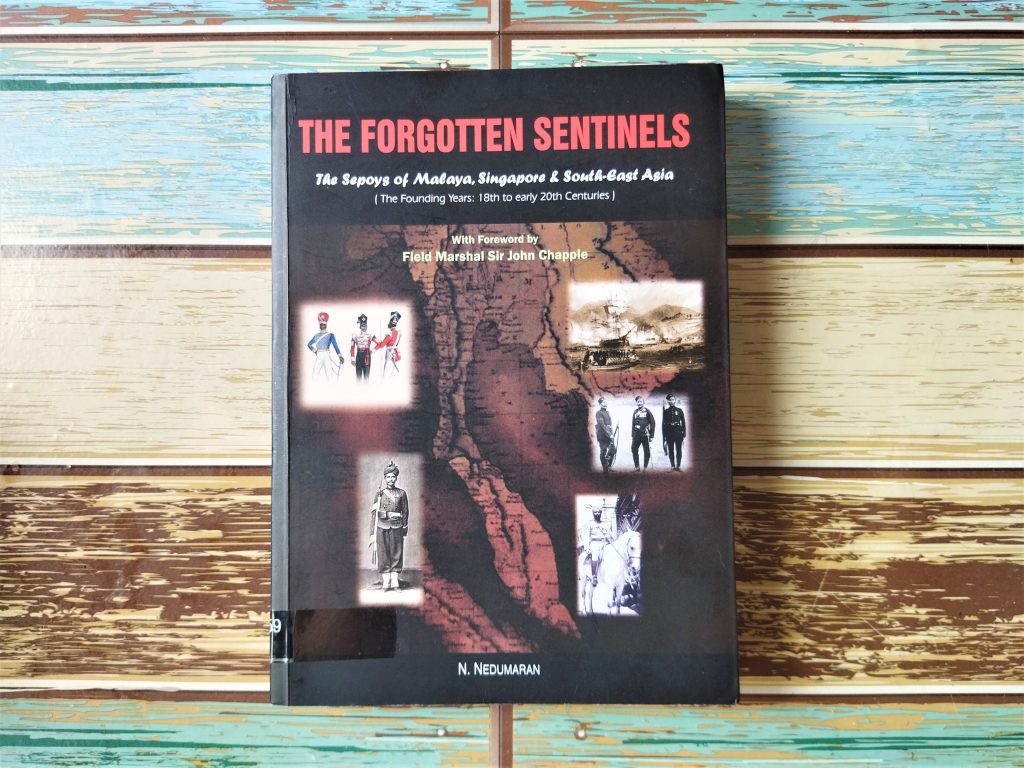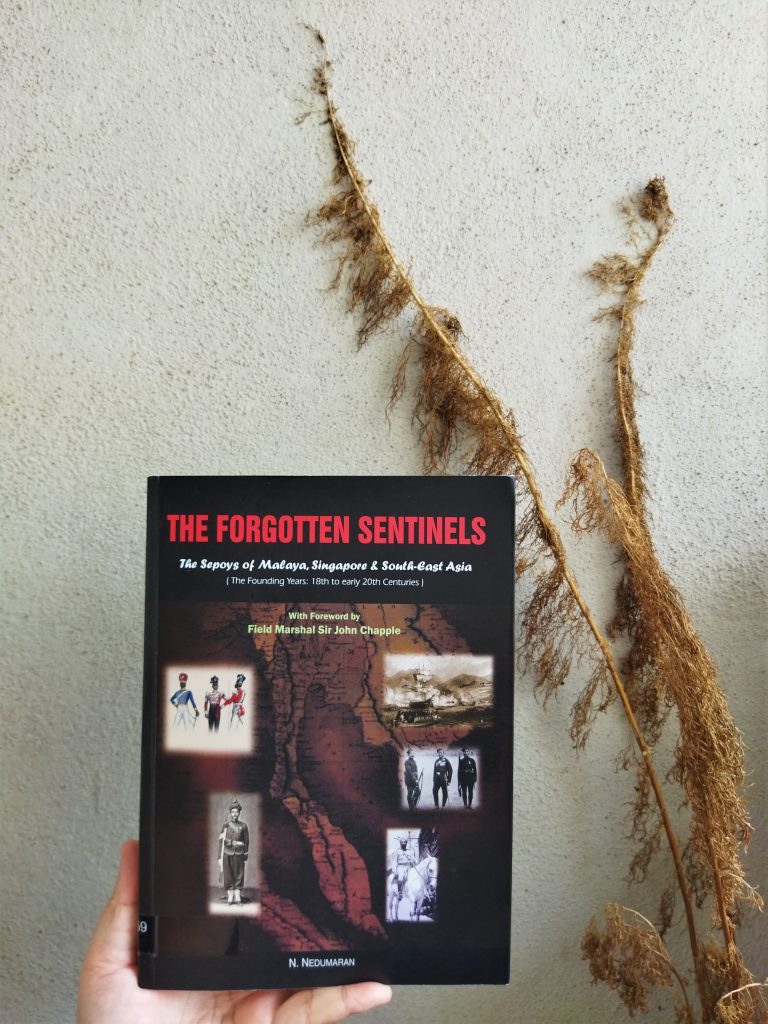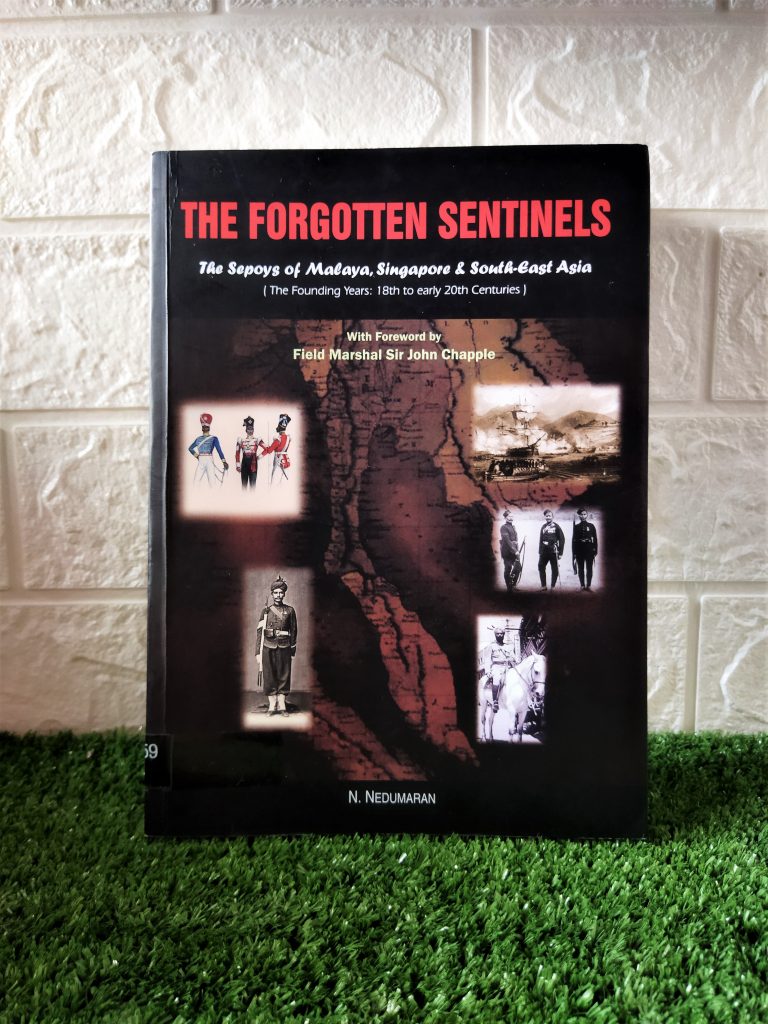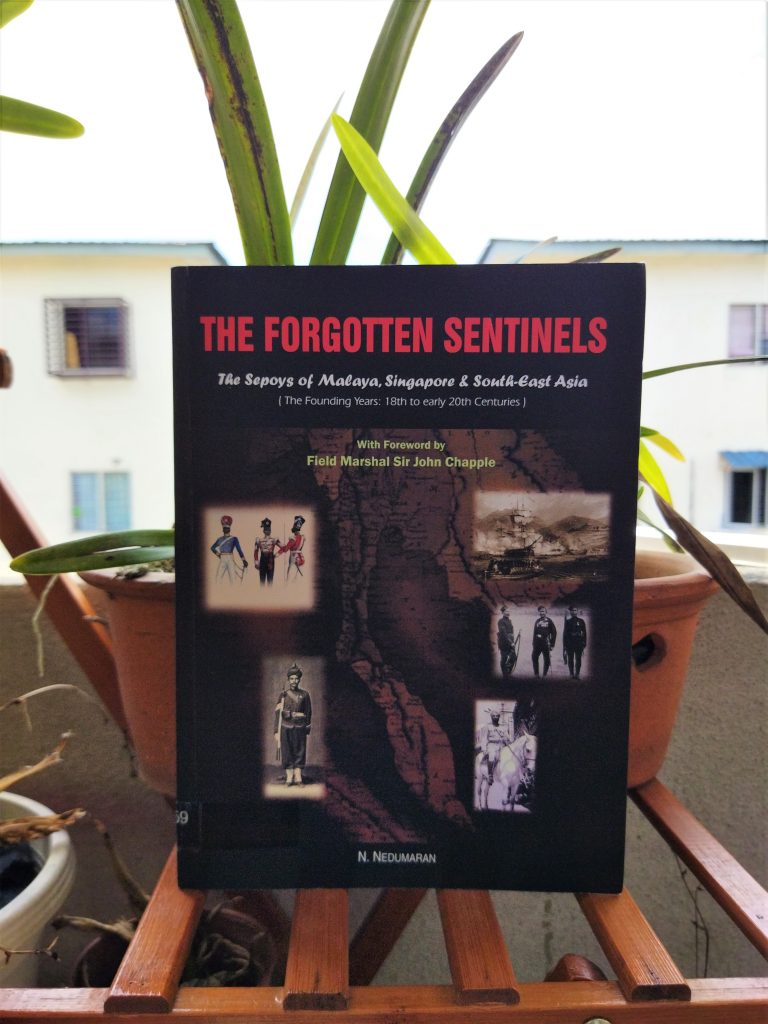Name: Magdalena Lampas
Book: The Forgotten Sentinels: The Sepoys of Malaya, Singapore & South-East Asia (The Founding Years: 18th to early 20th Centuries)
Author: N. Nedumaran
Publication Year: 2017
Book Language: English

Synopsis:
They were there when Francis Light founded Penang in 1786. They were there when Raffles landed at Singapore in 1819. In fact, there were present at every major historical milestone which led to the creation of the Straits Settlements and other key outposts in the East Indies. These were the ‘sepoys’: the hundreds of professional soldiers from the Indian Subcontinent, who served in South-East Asia between the 18th and 20thcenturies. Trained along the lines of contemporary British military methods, they devoted their lives-often literally-to successive colonial administrations, initially as troops of the English East India Company and later, the British Indian Army.
Yet, despite the intimate roles they once played, they have since faded from memory and remain conspicuously absent from the pages of modern-day history books. Now, for the veryfirst time, The Forgotten Sentinels fills this inexcusable void with an enthralling account which documents the epic adventures of these men. The product of years of painstaking and scholarly research, the author weaves his narrative with vividness and passion. A significant work which is overdue by generations, it challenges prevailing nations on South-East Asian history, and provides a comprehensive understanding of the crucial role played by the sepoys during the evolutionary years of the region.
Comment:
This book offers fascinating narrative of the Indian sepoys (Indian soldiers who are employed within European military) who played a pivotal role in the creation of the Straits Settlements of South-East Asia and early shaping of the region. There were hundreds of thousands of sepoys hailing from the Indian Subcontinent who served in the armies of the old English East India Company for generations in the East Indies (including the Malay peninsula and Singapore island), between the 18th and early 20th centuries.
In this book, N. Nedumaranhas mentions on the major regional operations that involved significant numbers of sepoys, such as the Java Campaign (1811), Naning War (1831-1832), and the Perak War (1875-1876). The book ends its narrative on the First World War, at a time when the presence of sepoy regiments as garrison forces had become a well-established component within the strategic military framework of the region.
One of the better-known wars that the author wrote about was the Perak War (1875-1876); this war was of course part of our nation’s history syllabus in school.
By the terms of the Pangkor Treaty of 1874, the Sultan of Perak, the British-supported Raja Abdullah, had agreed to accept a British Resident, Sir James W.W. Birch. However, in November 1875, Sir James W.W. Birch was killed by the local chief, Maharaja Lela, at Pasir Salak. The decision to kill Birch came after a meeting between Sultan Abdullah and his chiefs, when it was deemed that Birch had been interfering in matters of religion and custom. Following the murder of Birch, the British military deployed their garrisons including the Sepoys to end the local resistance. It did not take them long to wear out the rebellion, and by mid-1876, the war ended with the capture of prominent leaders and warriors such as Sultan Abdullah, Dato Maharaja Lela, and Ngah Ibrahim. Dato Maharaja Lela, Pandak Endut, Dato Sagor and others were brought to trial, found guilty and hanged to death. Four others were imprisoned for life. For his complicity in Birch’s death, Sultan Abdullah along with several other chiefs were exiled to the Seychelles. This ended direct opposition to British control of Perak.
Alongside the historical accounts, N. Nedumaran made a remarkable attempt to analyse the psyche of the sepoys. What made these men fight so loyally for a foreign power for two centuries through some of the bloodiest battlefields in the world? Want to find out why? Read the book!
– Magdalena Lampas, Transcriber

Excerpts:
“Life in medieval India was harsh, unforgiving, and fragile. The French recognised it, and took steps to come up with a very practical solution. They had started to enlist Indians into their military ranks as far back as 1674. And then an event occurred which dramatically demonstrated that well trained and equipped Indians were capable of defeating a force of European soldiers.” – Chapter 1: Dawn of the Sepoy Age, page 25
“Despite their later deployments elsewhere, both Malaysia and Singapore continued to benefit from some form of Gurkha representation long after they had gained their respective independence in 1957 and 1965. As such, their reassuring presence helped provide the necessary security and stability they both badly needed during their vulnerable nascent years. Then, in 1971, when the British Government made the decision to pull-back its forces from its ‘East of Suez’ presence, as part of its global cost-cutting strategy, the Gurkhas were finally withdrawn from both countries. One battalion was transferred to Brunei to be based there permanently, after the Sultan of Brunei – who had obviously never forgotten the magnificent role they played when they came to his aid during the 1962 revolt – agreed to bear the financial costs of their upkeep. Another battalion was shipped to Britain to be based in Church Crookham, Hampshire.” – Chapter 20: The Gurkha Sepoys, page 278




